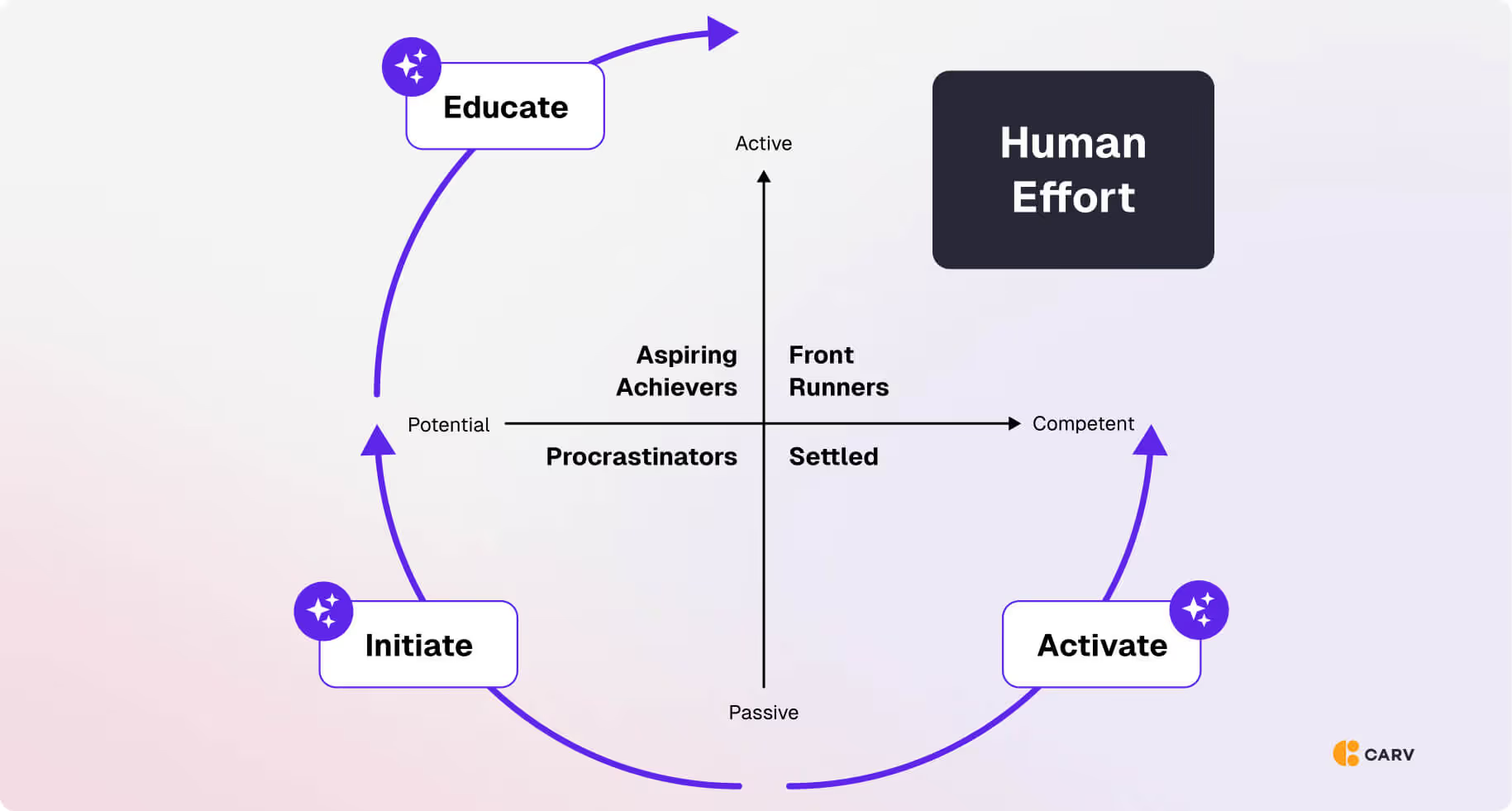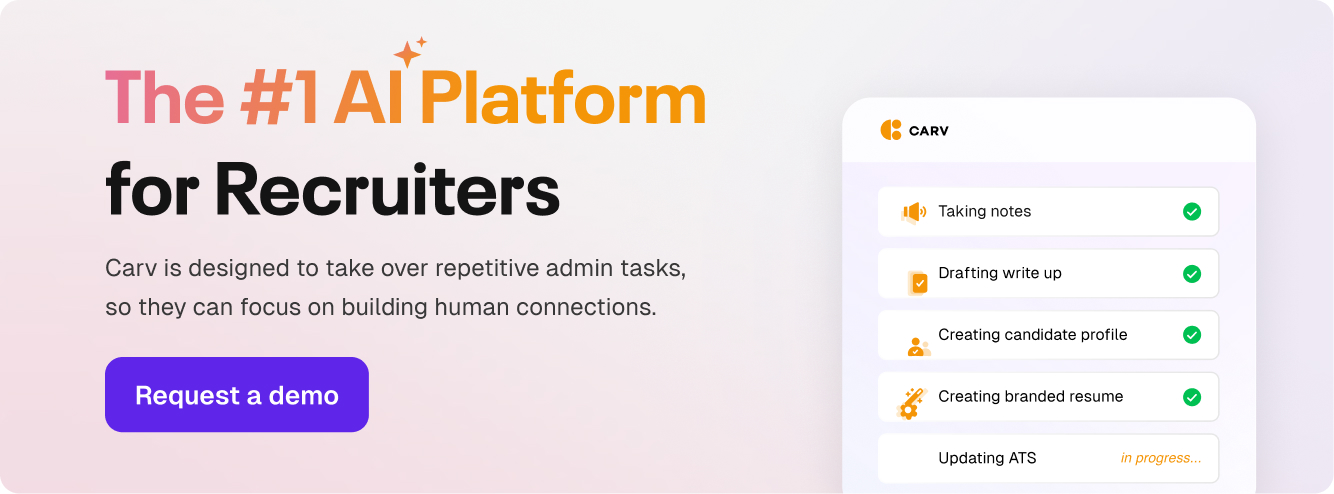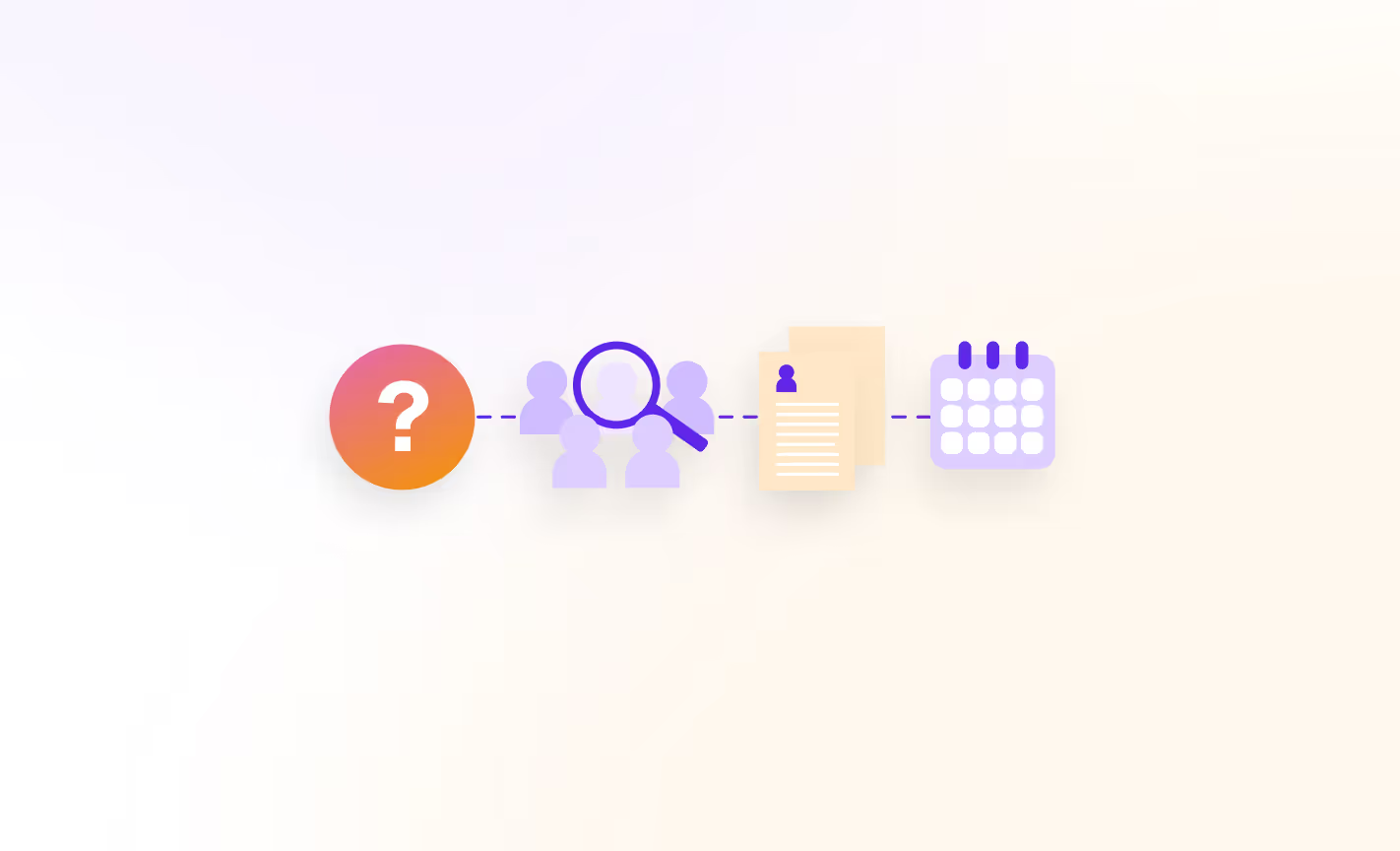How are staffing agencies using AI in 2024? How prevalent is the adoption of artificial intelligence in the staffing industry, what specific use cases are driving its implementation, and what workflows is AI technology transforming in staffing and recruiting firms?
Our data shows that the main use case of AI in staffing firms is driving internal efficiency.
This is in line with industry findings, with recent research by Bullhorn showing that 63% agencies are already using generative AI in some way.
According to the same report, 54% of staffing agencies are planning to roll out new AI-driven solutions in 2024, with their main focus being updating their internal systems to become faster.
But what does this look like in practice? Which workflows and processes are agencies integrating AI tools into?
Driving internal efficiency with AI
You might be tempted to believe that resume screening and candidate outreach are the main use cases for AI in staffing agencies. However, our data paints a different reality.
In staffing firms, most of the administrative work is related to interviews and intake calls. It’s therefore not surprising that 59% of staffing firms are using generative AI tools to speed up such tasks.
The repetitive tasks that recruiters go through when preparing a new intake call with a client or an interview with a new candidate, as well as the follow-up tasks related to these types of meetings, are the biggest time killers.

Of course, all this administration is a necessary part of a recruiter’s job, and until now, it was not possible to fully automate these processes using regular automation technology.
Although some steps in these workflows—such as scanning resumes or scheduling interviews—could be automated through RPA or similar approaches, AI makes it possible to fully streamline the recruitment process from end-to-end.
This is possible because, unlike traditional automation, AI can work with unstructured data, and interviews and intake calls are a form of unstructured data.

AI agents can join these meetings, listen in, and then transcribe the calls, summarize them, or extract notes, structuring the data so it can be used by other tools in the tech stack - ATS, CRM, and so on.
Moreover, recruiters can interact with AI workmates or chatbots in a human-like manner to ask questions related to their meetings or get up to date with what’s happening across the agency.
This means that with AI incorporated into their internal processes, agency recruiters can automate most of their admin, as shown below.
Delegating the admin related to intake calls
Preparing intake calls, taking notes during the meetings, following up with hiring managers, writing job descriptions based on these calls, and even creating candidate write-ups and profiles to match clients’ expectations - all these are tasks that can be taken over by artificial intelligence.
Moreover, AI-powered solutions can search through a talent pool to shortlist candidates with the right skill sets, but I’ll detail this use of AI a bit later.
Quick note here: Although tools like ChatGPT can help in writing job descriptions and job adverts, they lack the context required for personalizing the content for each client, as well as the tone of voice guidelines to correctly reflect a client's employer brand.
For this reason, AI recruitment tools like Carv, which allow for customized workflows and outputs, are a better option for staffing and recruitment agencies.
Carv joins intake calls, registers what is being said, and creates default output documents such as meeting notes and job requirements. Staffing agencies have the option to add different output formats and to customize the structure, style, tone of voice, and even the design of the generated documents.
The final output can be directly pushed to an ATS or CRM system, or can be downloaded as .pdf documents and sent to clients as part of regular communication workflows.
.avif)
Automating the admin related to candidate interviews
Next to intake calls, agency recruiters can let AI do all the prep work before a candidate interview, including the outreach and personalization of the recruiting messages or emails.
AI can take over the note-taking during interviews with potential candidates, and can write candidate profiles and write-ups after a call. At the same time, AI can handle the communication for progressing the best candidates through the application process or, on the contrary, for rejecting job seekers who aren’t the best fit.

Although AI algorithms aren’t necessary for handling the scheduling of interviews, as regular automation can take care of this step in the hiring process, you might want to use only AI-based automation throughout the entire recruitment funnel.
As for the interview process, this is the only step that should be handled by recruiters themselves, and not be handed over to AI. Not just to ensure that only quality candidates make it through to the next stages, but also to keep a human touch and deliver a great candidate experience.
Delegating the internal comms
Next to the interview- and intake-related admin, artificial intelligence can also handle the communication with other recruitment team members or agency stakeholders.
AI recruitment tools like Carv, for example, serve as a single source of truth, keeping agency recruiters on the same page and ensuring everyone involved in the hiring process has access to the same information regarding the client or the candidate.
Staffing recruiters can ask the Carv AI workmate to debrief an internal meeting, write a summary email, or prepare follow-up questions for internal stakeholders, speeding up internal communication workflows.
Automating sourcing and screening
Next to the administrative tasks related to intake calls and interviews, artificial intelligence can also take over the time-consuming sourcing and screening steps, further streamlining the talent acquisition process.
Data shows that 38% of agency recruiters are using AI for talent-facing solutions, mainly for reducing friction in the candidate experience and creating a talent-centric hiring process.
AI chatbots are used by staffing agencies to source talent and engage with candidates, as their natural language processing abilities give them human-like conversational skills.
To give just one example, AI tools can be integrated with talent pools, applicant tracking systems and social media platforms like LinkedIn, to ensure that the AI assistant has the full context and knows everything about a candidate before reaching out.
%20(1).avif)
Unlike regular automation and pre-defined outreach sequences, AI-based sourcing has the major advantage of real-time personalization. This helps in getting top talent interested, as we know that candidates have become completely numb to templated outreach messages.
Thus, next to the common use case of resume screening, AI can scan vast talent pools 24/7 and filter out or shortlist candidates based on their fit with an open position. This saves time while helping to remove the human bias from initial interactions with candidates.
Moreover, AI can engage with passive candidates, learning more about them to understand what types of jobs they’d be open to. Equipped with this information, AI assistants can help move candidates from a passive, non-interested position, to an engaged one, open to new opportunities.
For example, with Carv, staffing firms can customize AI workflows to engage with candidates who are already in the Talent Space, activating the passive candidates, and moving the interested ones to the next stages by showing them open vacancies and encouraging job applications.

This use case is expected to become even more important in the coming years, 46% of staffing firms reporting they will be using AI to match candidates to jobs, taking advantage of the speed and accuracy offered by artificial intelligence.
AI for business development and planning
Although less common at the moment, the third use case of AI in the staffing industry is business development - building pipeline, analysing data, and planning.
Agencies are already using AI tools to analyze recruitment data and identify trends, taking advantage of AI’s ability to analyse large sets of data and summarize the findings. Also, they’re using generative AI tools to optimize their job postings and recruitment campaigns for better results.
But a more interesting application here is the use of artificial intelligence for client outreach. This isn’t limited to personalizing the communication and using chatbots to automate the outreach though.
AI can help agencies identify new prospects and build pipeline by browsing through job boards and identifying job openings that might be a good fit for candidates already in the agency’s talent pool or Talent Space.
From there, AI assistants can match the jobs with interested candidates and reach out to prospects with a clear offer, putting the agency's pipeline building on autopilot.
Over to you
To sum it up, the use of AI in staffing agencies in 2024 is primarily centered around enhancing internal efficiency.
As shown by our data and industry research, the adoption of generative AI tools is on the rise, with a significant portion of agencies leveraging AI to streamline their operations.
If you’re interested in exploring possibilities by aren’t sure where and how to start, take a look at our article on Implementing AI in Recruitment, or schedule a demo call below.



.avif)



%20(1).avif)
%20(1).avif)